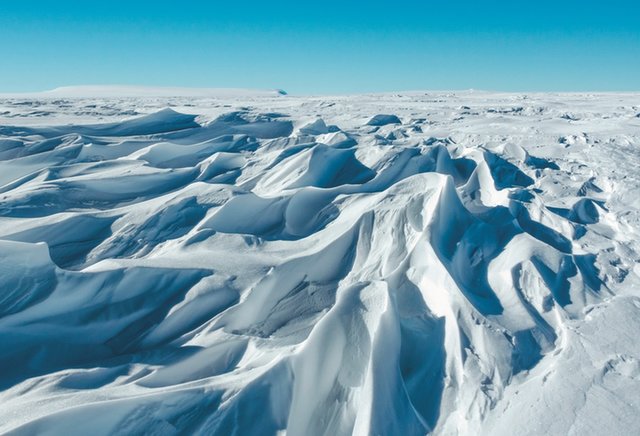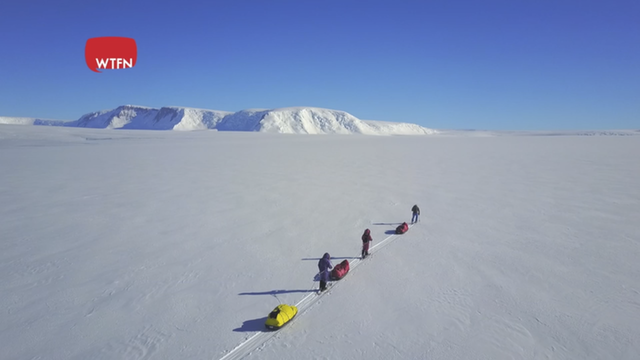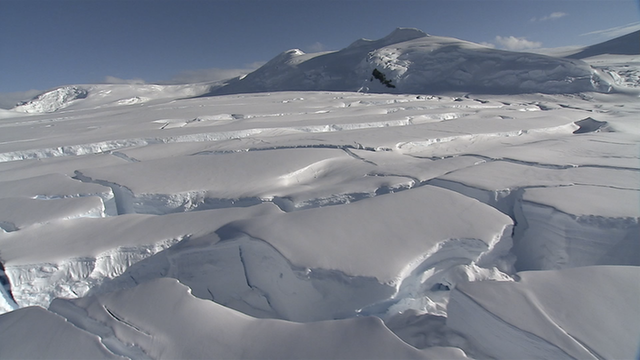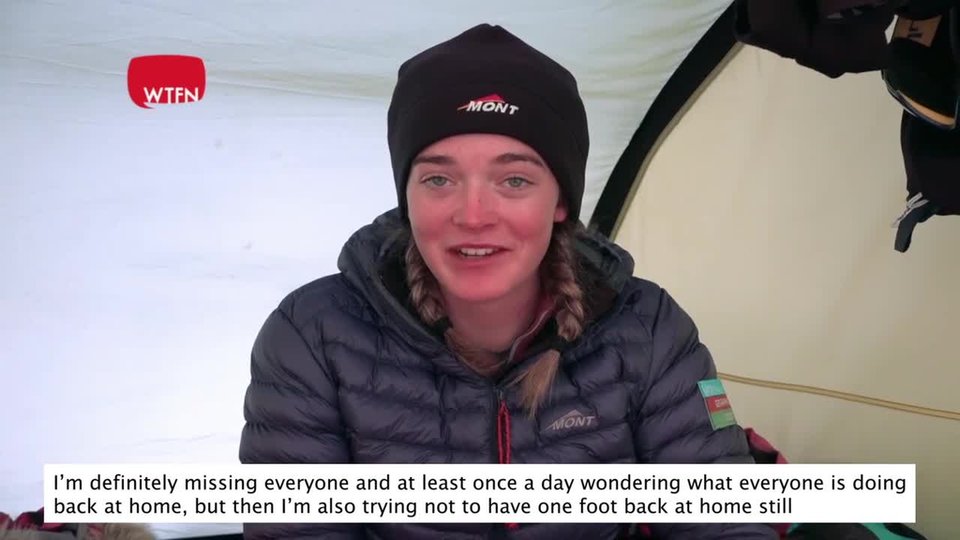Hard‑wonGains
Jade’steamincludedherfather,PaulHameister—atough,accomplishedmountaineer;masterpolarguideEricPhilips,whohadalsobeenontheirNorthPoleteam;cameramanMingd’Arcy;andassistantcameramanHeathJamieson,aformerAustralianArmycommandowhohadbeenwiththemontheGreenland expedition.
Fromthebeginning,conditionswerebrutal.Theroutestarteduphillandhardlyeverleveledoff.Jadestruggledwithhersledupicy slopes.
Sheheadedintowindsostrongandloudthatshehadtoscreamatherteammatestobeheard.Jadefeltlikeshewasstandingstill,eventhoughshewaspushingforwardwithallhermight.In25yearsofguidingpolarexpeditions,EricPhilipssaidtheseweretheworstweatherconditionshe’dever seen.
Withtheexpeditioncameramanbehindher,Jadeslowlymadeherwayacrossthe ice.
Thesteephillswereslickwithblueice.Skyblueincolor,thistreacherousiceishardandslippery,likeglass.Thesledsseemedtohavemindsoftheirown.Jade’sskiscouldn’tgettraction.Whentheyweren’tskiing,theyhadtostrapspikedmetalplatescalledtrailcramponstotheirbootstohelpthem walk.
Higherandhighertheyclimbed,astheymadetheirwayovertheKansasGlacier.Nohumanhadeversetfoothere.Aheadofthemwasasuper‑steepascentthatwouldtakethemthroughtheTransantarcticMountainsalongtheirnew route.

Sastrugi—wavelikeridgesoficemadethejourneymore difficult.
Thegoinggotevenharderastheyencounteredsomethingnew—sastrugi.Thesearewave‑likeridgesoficeformedbythewind.Skiingacrossthemwas,asJadereported,“likeskiingonachoppyoceanthathasbeenfrozenintime.”Strugglingacrosswholefieldsofthesehardiceridgeswasoneofthemostexhaustingthingsshehadever done.
Loomingahead,thefarwalloftheglacierlookedlikeagiant,frozentsunami.Theypushedupward,onlytofindthreemoreclimbsahead.Upandup—andfinally,at3,000meters(9,842feet)abovesealevel,theyreachedthehighestpoint—theStanfordPlateau.Thiswasavictory,buttheystillhadalongwayto go.
ManDown!
Thegreatestdangersontheroutewerethecrevassesthatlayinwaitacrossthelandscape.Thesedeep,seeminglybottomlesscracksarecoveredbysnowbridges.Theyaredeceptivelythinlayersofsnowandicethatformoverthecrevassesandhidethem.Jadeandherteamknewtheyneededtowatchout,ortheycouldtumbletotheir deaths.
Theteamcarriedlong,heavycoilsofrope.Whenthey’dreachanareawheretheysuspectedhiddencrevasses,theyropedthemselvestogetherincasesomebodyfell.Theyjusthadtohopetheirlongskiswouldspreadouttheirweightenoughtokeepthemfromfallingin.Itwastenseandhard going.
Oneafternoon,whenJadehadtakenashortbreak,sheheardawildyell.Whatwasthat?Sheknewtheothershadgoneonahead.Shelooked,andashortdistanceaway,shesawcameramanMingchest‑deepinacrevasse.Hewashangingontotheedgewithhisfingers!Jaderantowardhim,screamingforherdad.Mingmanagedtopullhimselfupandoutofthecrevasse. Whew!
Jadecarefullypeereddownintothecrevasse.Itwentstraightdowninto blackness.


